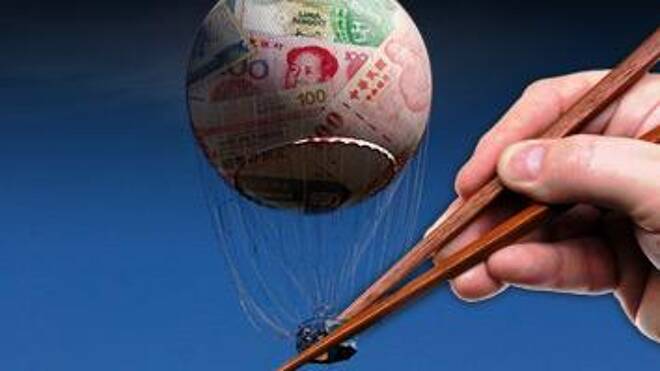Advertisement
Advertisement
Asian Currencies Trading In The Red
By:
In times of global turmoil the Japanese yen benefits from its safe haven status which it did as markets opened on Monday morning. Not much later growth
In this article:
Gross domestic product declined an annualized 0.8 percent in the three months ended Sept. 30, following a revised 0.7 percent drop in the second quarter, meeting the common definition of a recession. Economists had estimated a 0.2 percent decline for the third quarter.
Weakness in business investment and shrinking inventories drove the contraction as slow growth in China and a weak global outlook prompted Japanese companies to hold back on spending and production. The Japanese yen tumbled to 123.38 near its lowest trading price against the US dollar in months.
The US dollar was the big gainer in safe haven trades climbing to 99.67 on Tuesday morning. Further bolstering the dollar, at the expense of the euro, was a rise in haven assets, which also include gold and Treasury’s. Terrorist attacks and natural disasters tend to drive investors to buy assets that they expect retain value in the face of escalating economic and political uncertainty. The euro dipped to 1.0661 in the Asian session. The US dollar has been on a steady path higher against the euro and the yen in recent weeks on expectations that the Federal Reserve could raise short-term benchmark interest rates as soon as next month, while the ECB and Bank of Japan continue to pursue loose monetary policies.
Elsewhere in Asian the Aussie and kiwi continued to weaken trading near annual lows. In Oz the currency fell to 0.7084 down by 13 points against the greenback, after comments from the RBA and the release of monetary policy minutes from its last meeting. The slowdown in China and the rest of Asia remains the Reserve Bank of Australia’s biggest concern, according to the minutes of the last board meeting, while at home weak wage growth and continued falls in mining-related investment would prove the heaviest drags on growth.
Despite a moderately upbeat assessment of global conditions, the board noted that the “outlook for the Asian region, particularly China, remained one of the key uncertainties in forecasting global growth”.
“The slowdown in growth in Asia had been associated with lower growth in global trade volumes and industrial production, as well as further modest falls in commodity prices,” the board said in the minutes of its November 3 meeting, when it held the cash rate at 2 per cent for the sixth month in a row.
Across the Tasmania Sea the kiwi held true with its neighbors falling 36 points to 0.6458. The currency already faced downward pressure amid expectations the Reserve Bank will probably cut interest rates further next month, in contrast with the Federal Reserve in the US which is expected to hike rates.
About the Author
Barry Normanauthor
Did you find this article useful?
Latest news and analysis
Advertisement
